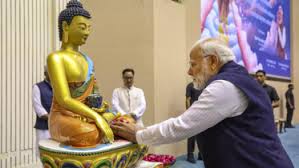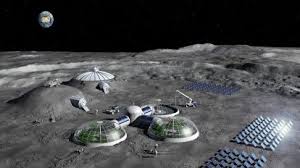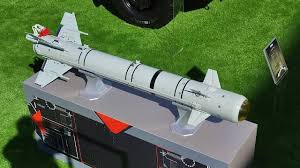Today’s Current Affairs: 22nd October 2024 for UPSC IAS exams, State PSC exams, SSC CGL, State SSC, RRB, Railways, Banking Exam & IBPS, etc
Table of Contents
Exercise Naseem-Al-Bahr:

INS Trikand and Dornier Maritime Patrol Aircraft, participated in the Indo-Oman bilateral naval exercise Naseem-Al-Bahr held in Goa.
- It is a bilateral naval exercise between India and Oman.
- It was initiated in 1993, symbolises the long term strategic relationship between the two countries.
- Oman is the first country in the Gulf Cooperation Council (GCC) which has been in conducting bilateral exercises with India jointly.
- The exercise was conducted in two phases: with the harbour phase followed by the sea phase.
- As part of harbour activities, personnel from both Navies engaged in professional interactions, including Subject Matter Expert Exchanges and planning conferences.
- In addition, sports fixtures and social engagements were also held.
- During the sea phase of the exercise both ships carried out various evolutions, including gun firings at surface inflatable targets, close-range anti-aircraft firings, manoeuvres, and Replenishment at Sea Approaches (RASAPS).
- The integral helicopter operated from INS Trikand and undertook cross-deck landings and vertical replenishment (VERTREP) with RNOV Al Seeb.
- Additionally, the Indian Navy’s Dornier aircraft provided Over-the-Horizon Targeting (OTHT) data with the participating ships.
- The exercise helped strengthen interoperability and enhanced understanding of each other’s best practices.
International Abhidhamma Divas:

The Prime Minister of India addressed a ceremony in celebration of International Abhidhamma Divas and recognition of Pali as classical language in New Delhi.
- Abhidhamma Divas commemorates the day when Lord Buddha descended from the celestial realm, Tāvatiṃsa-devaloka, to Sankassiya (now Sankisa Basantapur) in Uttar Pradesh.
- The Asokan Elephant Pillar, a historical marker at the site, marks this significant event.
- According to Theravāda Buddhist texts, Lord Buddha spent three months teaching the Abhidhamma to the deities in Tāvatiṃsa, including his mother.
- The celebration of Abhidhamma Divas coincides with the end of the first Rainy Retreat (Vassa) and the Pavāraņā festival, a time when monks and nuns conclude their retreat period with a ceremony.
- This year International Abhidhamma Divas was hosted by the Ministry of Culture in collaboration with the International Buddhist Confederation (IBC).
- The Abhidhamma adopts a specialized and analytical approach to explore reality.
- It offers a detailed framework for understanding the nature of existence, addressing the processes of birth, death, and mental phenomena in a precise and abstract manner.
- The four ultimate realities in the Abhidhamma are: “citta” (consciousness), “cetasika” (mental factors), “rūpa” (materiality), and “nibbāna” (final liberation).
National Water Awards 2023:

The Honorable President of India will confer the 5th National Water Awards 2023 on October 22nd 2024 at Vigyan Bhawan, New Delhi.
- The first edition of the National Water Awards was introduced by the Department of Water Resources, River Development and Ganga Rejuvenation in 2018.
- The award focuses on the good work and efforts made by individuals and the organizations across the country in attaining the government’s vision of a ‘Jal Samridh Bharat’.
- The awards are for creating awareness among the people about the importance of water and motivating them to adopt best water usage practices.
- The 5th National Water Awards, 2023,is given for 09 categories viz Best State, Best District, Best Village Panchayat, Best Urban Local Body, Best School or College, Best Industry, Best Water User Association, Best Institution (other than school or college), and Best Civil Society.
- In the category of Best State, the first prize has been conferred upon Odisha, with Uttar Pradesh securing the second position, and Gujarat and Puducherry jointly securing the third position.
- Each award winner will be conferred with a citation and a trophy as well as cash prizes in certain categories.
Moonlight Programme:

The European Space Agency (ESA) at the International Astronautical Congress, launched its Moonlight Lunar Communications and Navigation Services (LCNS) programme.
- The programme will have a constellation of about five lunar satellites (one for high data rate communications and four for navigation) that will allow accurate autonomous landings, high-speed communication, and surface mobility.
- It is Europe’s first-ever dedicated satellite constellation for telecommunication and navigation services for the Moon.
- These satellites will reportedly enable data transfer over 2,50,000 miles or 4,00,000 kilometres between the Earth and the Moon.
- The prime focus of the Moonlight programme will be to offer coverage at the Moon’s South Pole.
- The South Pole of the moon is a key area for many missions owing to lighting conditions and the potential presence of water ice within craters that perpetually remain in the shadows.
- As part of the programme, the first step will be the launch of Lunar Pathfinder, a communications relay satellite built by Surrey Satellite Technology LTD, in 2026.
- The initial services of the programme will reportedly begin by the end of 2028, and the system is said to be fully operational by 2030.
- The ESA is working with NASA and the Japanese space Agency JAXA on LunaNet, which is essentially a framework to standardise communication and navigation for the Moon.
Izdeliye 305:

Russian state corporation Rostec has claimed that its Light Multipurpose Guided Rocket, also known as Izdeliye 305 or “Product 305,” has demonstrated remarkable resistance to jamming and interference on the battlefield in Ukraine.
- The Izdeliye 305 missile, also known as the LMUR (Light Multipurpose Guided Rocket), is a highly precise Russian helicopter-launched air-to-surface missile.
- It’s capable of targeting a broad range of threats, including armored vehicles, various structures, and vessels.
- It measures approximately 1.94 meters in length with a diameter of around 200 millimeters and weighs about 105 kilograms.
- Its aerodynamic design minimizes drag, while its foldable wings and tail stabilizers enhance maneuverability during flight.
- The missile is powered by a solid-fuel rocket engine.
- The missile’s advanced guidance system includes a combination of inertial navigation and an active radar homing system.
- Additionally, it features an infrared sensor, making it effective in different weather conditions and capable of targeting both stationary and moving objects.
- It has the ability to engage targets at distances of up to 14.5 kilometers.
- It is equipped with robust communication systems to mitigate risks from jamming.
- LMUR can carry various warheads, with the most common being a high-explosive warhead designed for destroying armoured vehicles and infrastructure.
Coelogyne tripurensis : New Species Of Orchid

A new species of orchid named Coelogyne tripurensis was recently discovered in Jampui Hills, in Tripura’s North District.
- Coelogyne tripurensis is a new species of orchid.
- It was discovered from the moist broadleaf forests of Jampui Hills in Tripura, situated at the westernmost fringe of Indo-Myanmar Biodiversity Hotspot.\
- This genus, consisting of around 600 species, is native to the Indian subcontinent, Southeast Asia, and the Southwest Pacific Islands.
- The genus consists of mostly epiphytic (rarely lithophytic and terrestrial) taxa and is widely popular among horticulturists for its high ornamental value and easy growth requirements.
- The section of Coelogyne to which the new species belongs, Fuliginosae, is characterised by unique features such as showy flowers, a distinctive labellum, and keels.
- Species belonging to this group show a high degree of phenotypic plasticity, rendering them challenging to delineate.
Pledge for Fungal Conservation:

Chile and the United Kingdom have prepared a proposal named ‘pledge for fungal conservation’ to give fungi its own taxonomic kingdom named ‘funga’.
- The proposal would be submitted during the 16th Conference of Parties (COP16) of the UN Convention on Biological Diversity (CBD) in Cali, Colombia in October 2024.
- It aims to recognise fungi as an independent kingdom, termed Funga, alongside plants (flora) and animals (fauna).
- It advocates for the recognition of fungi in legislation, policies, and global agreements to maintain fungi’s ecological benefits.
- In August 2021, the International Union for the Conservation of Nature Species Survival Commission (IUCN SSC) and IUCN Re:wild became the first organisations to recognise fungi as one of three kingdoms of life.
- The Chilean-British-led “3F” (Flora, Fauna, and Funga) initiative emphasises the need for international recognition and protection of fungi.
- As per Mycologists, only 8% of the total 2.2 and 3.8 million species of fungi are scientifically known and about 2,000 new species are discovered annually across the world.
- Mycologist studies fungi such as moulds, yeasts, and mushrooms.
- Fungi help in decomposition, forest regeneration, carbon sequestration, and maintaining the global nutrient cycle.
- They play a vital role in mammalian digestion and are crucial in the production of antibiotic medication.
- Several common food products, including bread, cheese, wine, beer, and chocolate, depend on fungi for their production
Fungi also help in cleaning polluted soils and offer sustainable food alternatives to animal products e.g., amino acids, fibre, and antioxidants. - Boreal forest fungi absorb significant amounts of carbon through root symbiosis with plants, thus contributing to mitigating climate change.
- Threats to Fungi: Overharvesting, nitrogen enrichment in soils, deforestation, climate change, pollution, and the wide scale use of fungicides endanger fungal species.
- These threats jeopardise the symbiotic relationships fungi have with plants and animals, disrupting ecosystem stability.
All India Rural Financial Inclusion Survey (2021-22):

The latest All India Rural Financial Inclusion Survey (2021-22) indicates a reversal of the declining trend in rural households’ dependence on agriculture.
All India Rural Financial Inclusion Survey (2021-22):
- 57% of rural households were identified as “agricultural” in 2021-22, up from 48% in 2016-17. This includes semi-urban centers with less than 50,000 population. (NABARD’s All India Rural Financial Inclusion Survey)
- The average monthly income of agricultural households was ₹13,661 in 2021-22, compared to ₹8,931 in 2016-17. Agricultural households earned more than their non-agricultural counterparts. (NABARD Survey)
- Income from farming activities rose from 43.1% to over 45% in 2021-22. (NABARD Survey)
- The pandemic-induced economic slowdown caused a shift back to agriculture, which was less affected by lockdowns due to exemptions. (NABARD Survey and PLFS).
- PLFS data shows agriculture engaged 46.5% of India’s workforce in 2020-21, rising from 42.5% in 2018-19. (PLFS)
eShram-One Stop Solution:

Union Minister Dr. Mansukh Mandaviya is set to launch the eShram-One Stop Solution, a platform designed to streamline access to various social security and welfare schemes for unorganized workers in India.
- e-Shram launched on August 26, 2021, to provide a comprehensive database of unorganized workers and serve as a platform for accessing welfare schemes.
- Aim is to act as a One-Stop Solution for unorganized workers, integrating information and facilitating easy access to social security and welfare schemes.
- Nodal ministry: Ministry of Labour & Employment.
- Features:
- Combines information from 12 central schemes to ensure unorganized workers benefit from multiple government initiatives.
- Serves as a centralized database and mediator to simplify the process of identifying eligible workers and saturating scheme benefits.
- Over 30 crore unorganized workers have registered on the platform as of October 2024.
- Improves awareness among unorganized workers regarding available welfare schemes, contributing to better coverage and support for this vulnerable sector.
India’s President visited Malawi and Mauritania:
This is the first-ever visit by an Indian President to Malawi and Mauritania. India is the 4th largest trading partner of Malawi with bilateral trade of USD 256.41 million in 2021-22. India’s investment in Malawi stands over USD 500 million.
Malawi (formerly known as Nyasaland) is a landlocked country in southeastern Africa
Fortified Rice:
The Union Cabinet has approved the continuation of fortified rice distribution under government schemes, including PMGKAY, from July 2024 to December 2028, aimed at combating micronutrient deficiencies in India. Fortification is the process of adding nutrients to food products that are not naturally present or are present in insufficient amounts.
New Justice Statute:
The Lady Justice statue was unveiled at the Supreme Court, on the directions of the Chief Justice of India. The statue was without the blindfold, and with the Constitution held in place of the sword, signifying that the law in India is both informed and not driven by retribution. Lady Justice is an allegorical figure representing the moral authority within judicial systems. It is often depicted alongside Prudentia, another allegorical figure representing wisdom and prudence.




